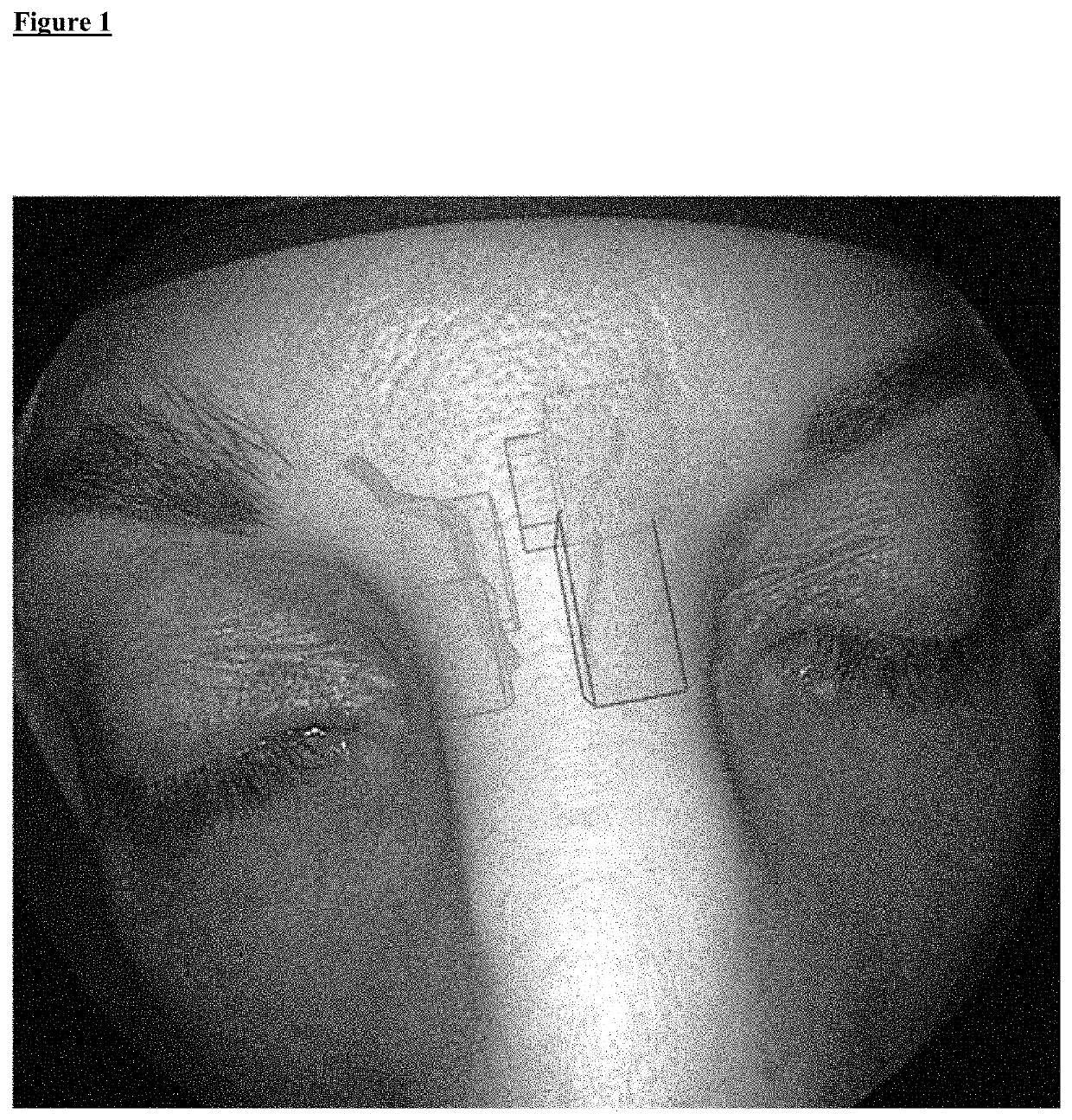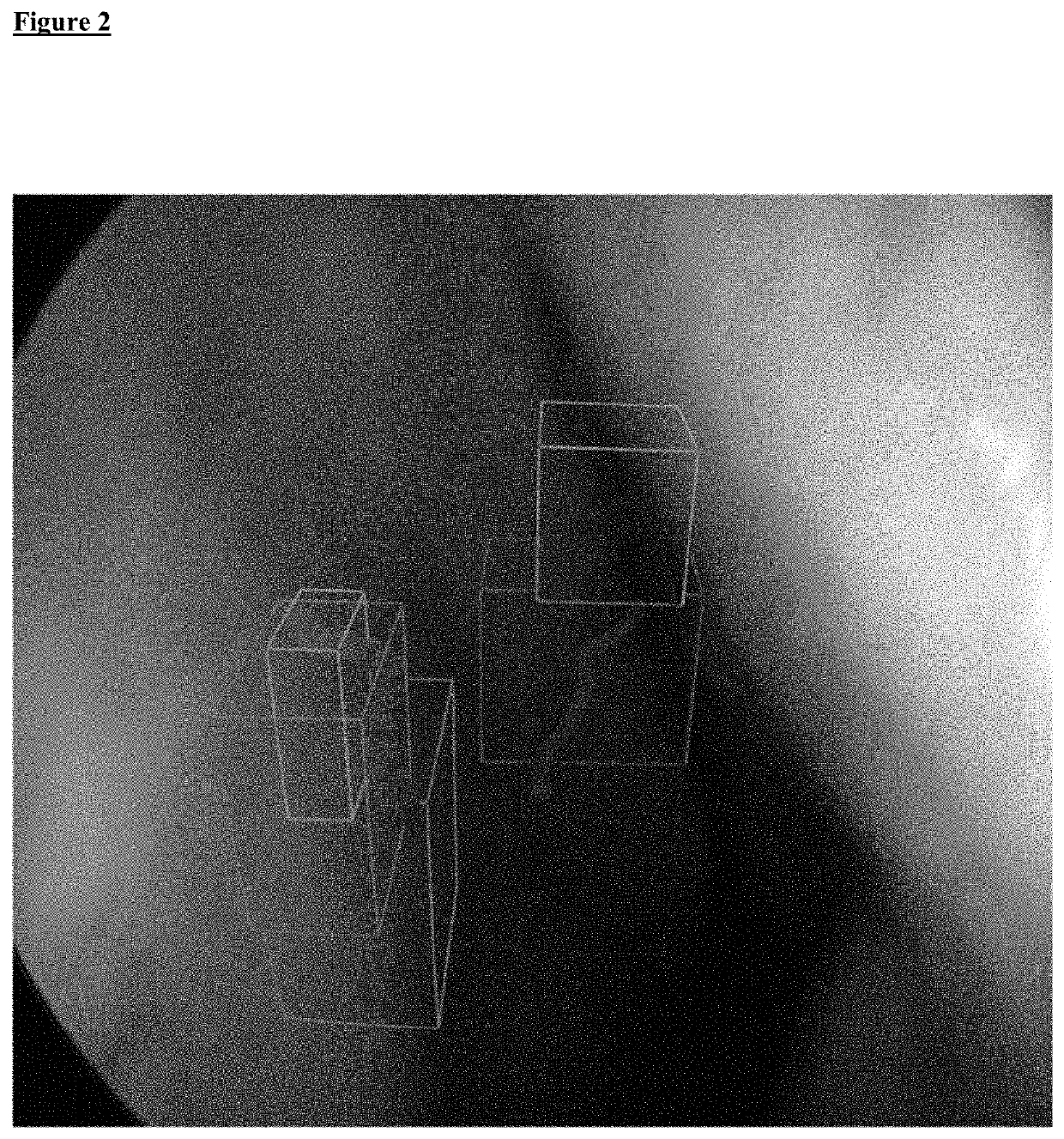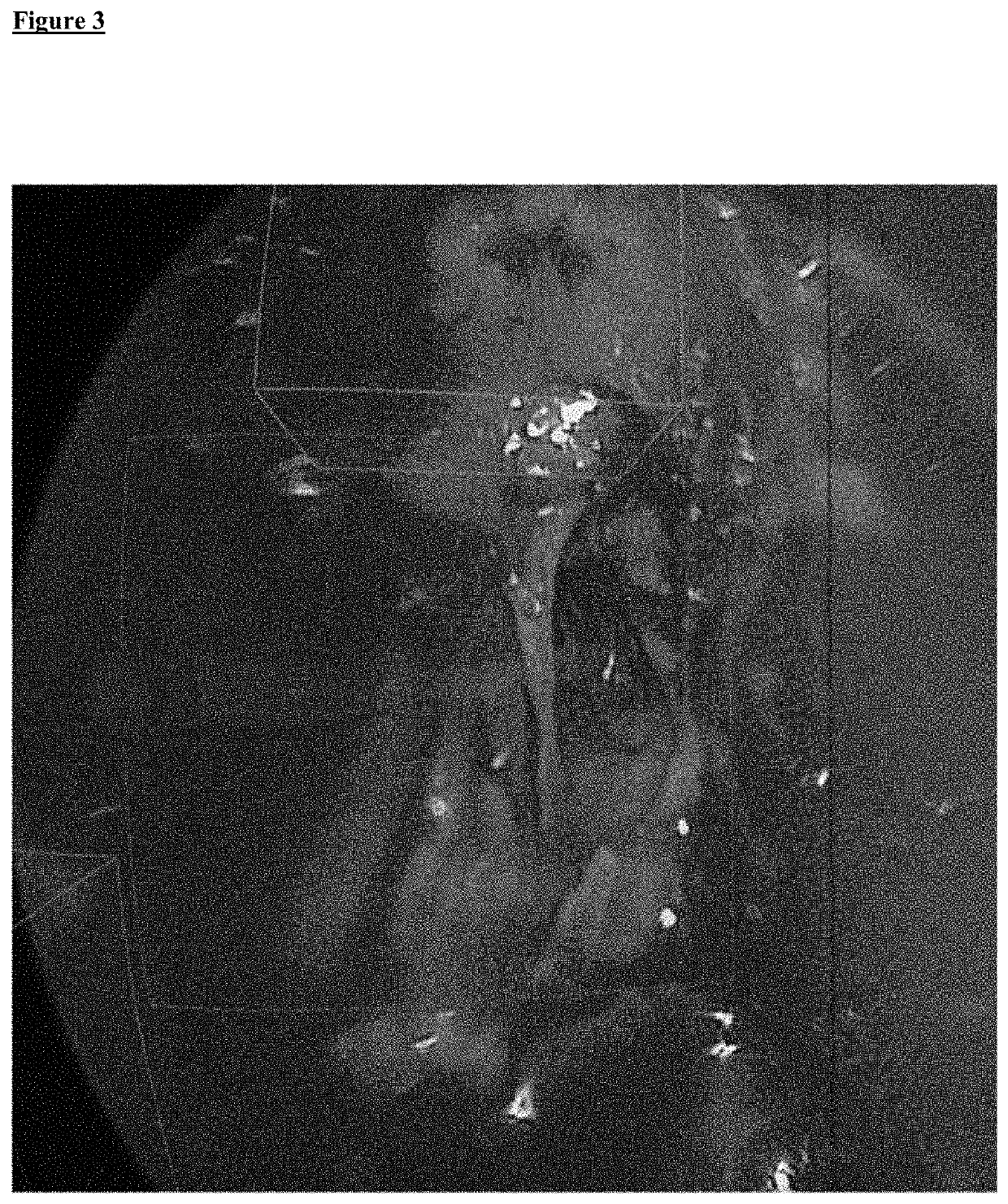Instrument guidance system for sinus surgery
a sinus surgery and guidance system technology, applied in the direction of instruments, image enhancement, applications, etc., can solve the problems of not providing differentiation and subdivision of individual nasal cells, not suitable for the determination of sinus natural drainage pathways, and only working with air-filled nasal cells
- Summary
- Abstract
- Description
- Claims
- Application Information
AI Technical Summary
Benefits of technology
Problems solved by technology
Method used
Image
Examples
Embodiment Construction
[0050]The present invention provides a fast, easy-to-use and intuitive method for generating an augmented reality image for supporting the adjustment of the position of a surgical instrument during sinus surgery. Further, the present invention provides a method for supporting computer assisted navigation and opening or reopening natural cavities and orifices of the human body, wherein the treatment of the human or animal body is not part of the instant invention. The method is based on a manual or automatic selection or segmentation of sinus cells, cavities and / or orifices of the sinuses. The method is suitable for computer assisted labelling of cavities like sinus cavities for instance in the 3-D patient image data according to the planning scheme described in the literature and taught in the training of surgeons.
[0051]It is an advantage of the subject matter of the instant invention that it is for the first time possible to assist a surgeon during sinus surgery by superimposing ge...
PUM
 Login to View More
Login to View More Abstract
Description
Claims
Application Information
 Login to View More
Login to View More - R&D
- Intellectual Property
- Life Sciences
- Materials
- Tech Scout
- Unparalleled Data Quality
- Higher Quality Content
- 60% Fewer Hallucinations
Browse by: Latest US Patents, China's latest patents, Technical Efficacy Thesaurus, Application Domain, Technology Topic, Popular Technical Reports.
© 2025 PatSnap. All rights reserved.Legal|Privacy policy|Modern Slavery Act Transparency Statement|Sitemap|About US| Contact US: help@patsnap.com



